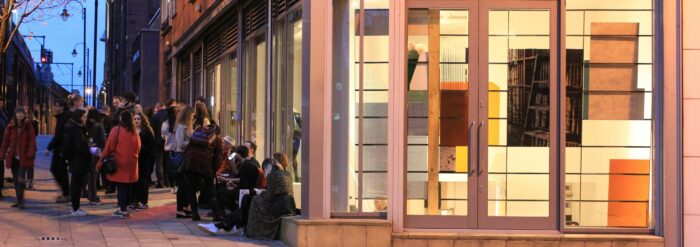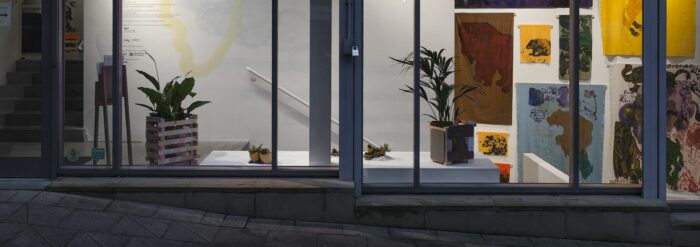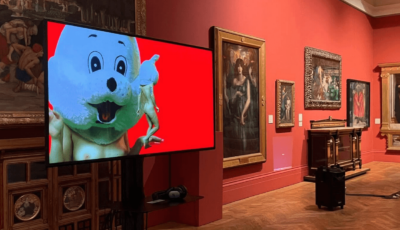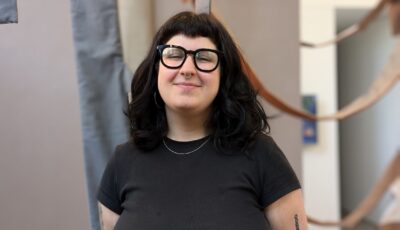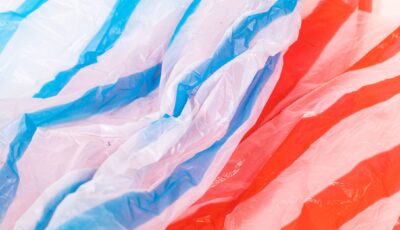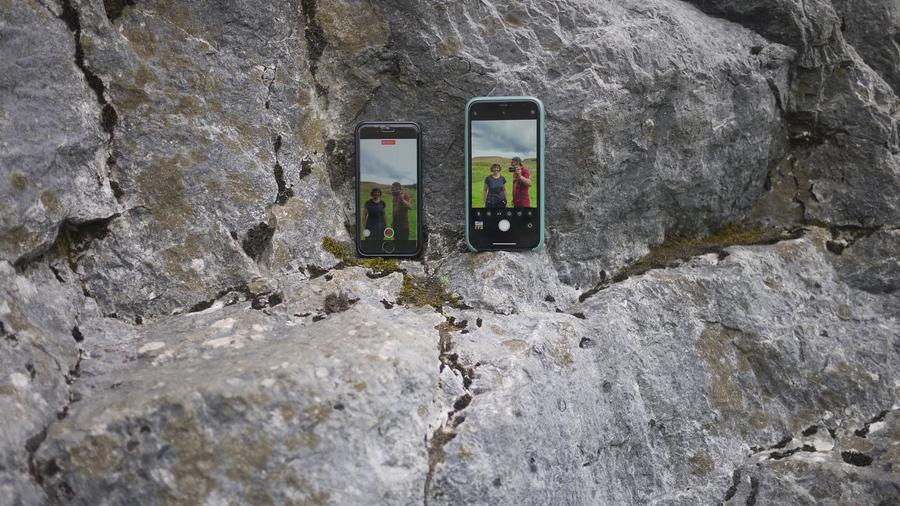
Spotlight: Artists and Sustainability – Sylvia Waltering and Roger Suckling
Posted on 24 November 2022
This month we’ve invited artists Sylvia Waltering and Roger Suckling to contribute to our ongoing series Spotlight – Artists and Sustainability, where we ask artists to share short responses about their work and how it might relate to climate change. Sylvia and Roger participated in THE EXCHANGE 2, a creative exchange project that brought together practitioners at Extra Ordinary People (Eastside Projects, Birmingham), CAMP (Plymouth), Turf Projects (Croydon), Primary (Nottingham), The NewBridge Project (Newcastle), Spike Island Associates (Bristol) and Castlefield Gallery Associates. The EXCHANGE paired peers from different networks in an effort to open up space for new creative conversations. As a member of Castlefield Gallery Associates, Sylvia was paired with Roger who is based at Primary in Nottingham. Having developed new work together they are continuing to develop their creative conversation.
In what ways do you feel your work might relate to issues of climate change and sustainability, in the content of the work, its narrative, conceptually or theoretically? How might it speak to or challenge public discourse?
Sylvia: The starting point for the work Roger and I made as part of The Exchange 2 was walking. Walking is also central in my own practice and the work I make does encourage a re-consideration of our connection with and relation to the natural environment. As soon as you are out there in the landscape, exploring places not just in an intellectual, abstract way, but physically experiencing it with your body in some way, you can’t not think about climate change and the impact of humans on the landscape and wildlife. After all, this is the age of the Anthropocene – the impact of human activity is visible and tangible everywhere, from the crisp packet you find discarded on a remote hill to erosion in popular parts of the Peak District (where we met to walk together).
Whereas issues of climate change and sustainability are not a driving force behind the work we made or in my own practice, it is certainly something we both think about when making work. In the collaboration, it started with a discussion on our first walk about the materials we would be leaving behind. We had decided to put up QR codes along the routes we walked that would take other walkers to the website we created for the work. I had forgotten my staple gun and the only way of putting the QR codes up was to use a roll of sellotape I had in my backpack. I felt bad about it and perceived it as essentially being some form of littering. The paper QR code would biodegrade over time of course, but the plastic of the tape would remain. I don’t think this is something I would have given much thought to five years ago.
Roger: “I have changed every light bulb in the house, what more can I do?” I heard this at a screening of Al Gore’s film An Inconvenient Truth. The answer came at the end of his next film: Lobby your government! Maybe as artists, we should be lobbying governments. Climate change is the most important issue facing everyone today. I have been trying to find ways to incorporate my thoughts about it into my practice. It is a discussion that Sylvia and I have and it is something that I think we are both still working on. I’m not sure how much I will be able to convince climate sceptics and deniers through my artwork. I wonder if I will just be engaging with others in an echo chamber where we all agree that climate change and issues around sustainability are bad things.
My practice is to do with an engagement with landscape, which has a natural connection with Sylvia’s work. The walks we have undertaken and the work we have produced, have raised questions about audiences and how they will respond to that work. My hope is that the 700+ visitors to our website will have a positive response to both the Fieldnotes and the work we have included.
The first walk Sylvia and I did was in July 2022, in Derbyshire, and the landscape was so obviously parched dry after a long period without rain. And a recent walk, revisiting a small river, also in Derbyshire, that was full of water when I made some work around it a couple of years ago is now completely dry, again after a long dry stretch. The changes to this small, specific landscape maybe reflect the changes that are happening to the climate worldwide.
With regards to the materials, processes and techniques you use to produce your work, are there any practical decisions you make with regard to climate change and sustainability?
Sylvia: This is something I think about more and more in my work, but I have not come up with a solution to have a completely sustainable art practice (if there even is such a thing). I have just come back from an artist residency in Japan, where I learned Japanese Woodblock printing (Mokuhanga), a non-toxic, water-based printing process, that I want to incorporate into my making. That is only one step of course towards trying to be more sustainable in my work. There are still other processes I use, however, that are less environmentally friendly and more wasteful of resources.
All work Roger and I produced for THE EXCHANGE 2 is digital and currently only exists on the website we set up. I guess that is one way of working more sustainably (not that data has no environmental impact). I don’t think I will ever work fully digitally though. I love hands-on making processes and practical experimentation with materials and making are important ways for me to think through ideas and have an influence on the final outcome.
Roger: My artwork is mainly digital, as is the work that Sylvia and I have made so far for this collaboration. The Exchange 2 programme that led to our collaboration was developed around online meetings and workshops. Without this online presence, collaborations could have still taken place, but it might not have been so easy to find ways to work together, but on the other hand, I’m sure the Zoom servers have some negative environmental impact.
In general, how do you feel galleries, art spaces, artworks and artists, might be able to contribute, what, if any, role do you feel they can play in a progressive conversation?
Sylvia: I guess there is a multitude of ways. It is a multifaceted issue and difficult to answer. It starts with galleries and art spaces considering their own environmental impact, as well as considering what type of work they show, both in terms of content and processes used. For individual artists, it is important to think about and be aware of the (small) changes we can make. They do add up and are worth the extra effort they might sometimes take.
Essentially, I do believe that we can all make some adjustments in our practices that will have a positive impact. However, without wanting to sound all doom and gloom, until governments and the big companies responsible for huge percentages of pollution, greenhouse gasses and resource squandering make impactful changes, no matter what we do as individuals, it will not stop climate change. However, that is not an argument for not trying our individual best and being involved in the conversation.
Roger: These questions have been challenging for me to answer, both in terms of thinking about my own work, and our collaboration with the art world more generally. Until I started doing some research I hadn’t heard of, for example, Julie’s Bicycle, an organisation that works with arts organisations and the Arts Council to report on these issues. The most recent annual report that they and ACE published shows that progress is being made across the sector. Their report for 2018 states that; “everyone is responsible for creating a more environmentally sustainable world”.
So, maybe as artists we should be lobbying governments and the other organisations we are involved with, including galleries.
Are there any tips or advice, anything you have learnt you might want to share with other artists or our audiences?
Sylvia: I would just say to have a bit of a look around. Even if your practice does not conceptually explore these issues directly, there are often alternative ways of doing something that might be more sustainable and just to keep the conversations around it going in your own network.
Roger: I recognise that individual actions are important and that we all have that responsibility to make changes however small.
Image: Sylvia Waltering and Roger Suckling, THE EXCHANGE 2, detail (2022)
